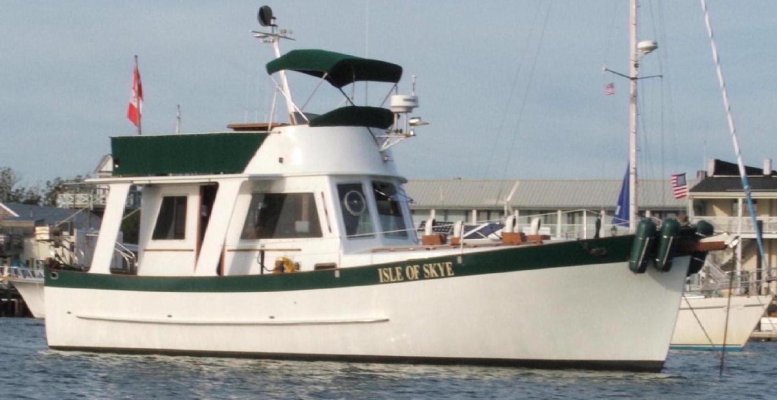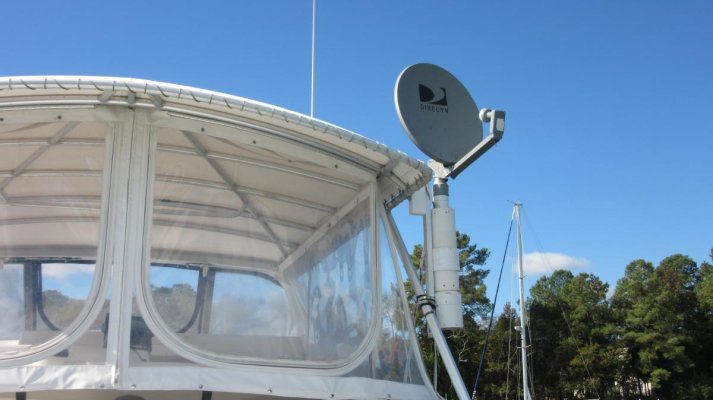mixman
Senior Member
I'm well into a refit on a 1976 Gulfstar 36' MKII Twin Trawler. Electrical is just about done (DC and AC upgrades). Next is plumbing (I'm pretty set on what I want), and then on to other systems. Input/experiences will be greatly appreciated.
1 – RADAR – Toying with mounting on an EDSON pole but also mounting the dome in front of and just below the upper helm. I’ve seen that done many times on other boats and I know the new domes don’t pose a health threat. But what would that do to the coverage to the stern? I very much like seeing if something is coming up behind me. Would it be able to “see” through the upper helm, additional bimini supports (sun deck) and such or would that degrade things?
2 – Satellite TV – I know the smaller KVH, Itellian, Raymarine domes will all work fine state-side, but we’re going to (hopefully) be into the Exumas. Checking coverage charts I don’t think the small domes are going to work well there. And the larger domes are heavy and very expensive. I’m tempted to go with the TITV (Track-It TV) PVC pipe thing as it can take up to a 32” dish. They don’t work well underway though.
3 – 12v or 110v refrigerator – I was originally planning on using the 36" 110v unit that was on the boat. A friend of mine who’s cruising right now runs a 110v refrigerator off inverter and has no problem with it. But my contractor really suggests 12v. I have an inverter-charger fully installed, but what if it goes up and we’re in the middle of nowhere? We’re installing a backup Pro-Mariner 40-amp charger for such a situation but I’d have no inverter.
4 - Autopilot. Twin inboard diesel. Hydraulic steering. I installed an AP on my powercat (manual cable steering with outboards) but am just starting research on a system for this boat.
Thanks!
1 – RADAR – Toying with mounting on an EDSON pole but also mounting the dome in front of and just below the upper helm. I’ve seen that done many times on other boats and I know the new domes don’t pose a health threat. But what would that do to the coverage to the stern? I very much like seeing if something is coming up behind me. Would it be able to “see” through the upper helm, additional bimini supports (sun deck) and such or would that degrade things?
2 – Satellite TV – I know the smaller KVH, Itellian, Raymarine domes will all work fine state-side, but we’re going to (hopefully) be into the Exumas. Checking coverage charts I don’t think the small domes are going to work well there. And the larger domes are heavy and very expensive. I’m tempted to go with the TITV (Track-It TV) PVC pipe thing as it can take up to a 32” dish. They don’t work well underway though.
3 – 12v or 110v refrigerator – I was originally planning on using the 36" 110v unit that was on the boat. A friend of mine who’s cruising right now runs a 110v refrigerator off inverter and has no problem with it. But my contractor really suggests 12v. I have an inverter-charger fully installed, but what if it goes up and we’re in the middle of nowhere? We’re installing a backup Pro-Mariner 40-amp charger for such a situation but I’d have no inverter.
4 - Autopilot. Twin inboard diesel. Hydraulic steering. I installed an AP on my powercat (manual cable steering with outboards) but am just starting research on a system for this boat.
Thanks!






